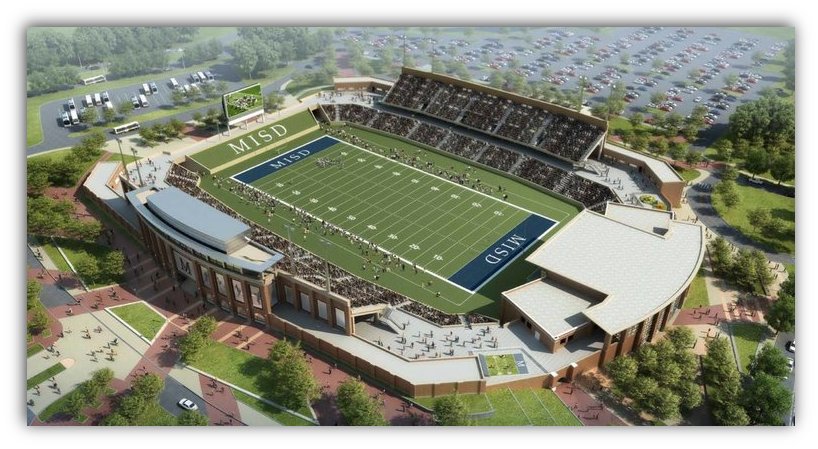
Rendering from McKinney Independent School District via New York Times
A lot of so-called “movement” conservatives dislike Donald Trump because he isn’t conservative in their view. Some of them have sadly concluded that much of their own base is not as well, being much more open to things like protectionist trade policy than in years gone by.
Their focus has been on working class voter, but another chunk of the Republican electorate, namely upscale metropolitan Republicans, is also moving away from some traditional conservative positions.
These middle to upper middle class Republicans have little interest in yesterday’s puristic version of reducing government spending. Instead, they actually are clamoring for more of it in many cases.
We see this illustrated by an article in the New York Times about a planned $63 million high school football stadium in McKinney, Texas, a north Dallas suburb.
Voters in McKinney, Tex., have given the go-ahead to spend nearly $63 million on building a high school football stadium after months of contentious debate in the suburb north of Dallas….The McKinney project has frequently been compared to the $60 million high school stadium in nearby Allen. With seats for 18,000 people, the Allen stadium has nearly the same capacity as Madison Square Garden. Another school stadium under construction in Katy, outside Houston, will have 12,000 seats at a projected cost of more than $62 million.
McKinney, with a population of around 150,000, is 65% Republican. A $63 million football stadium for a high school team is practically the definition of a boondoggle to traditional conservative thinking. Yet it was put to a referendum and passed with two-thirds of the vote as part of a $220 million schools spending plan.
This shows the change in places like McKinney that ring America’s major metro areas. These are generally solidly Republican but increasingly are taking the view that they want more nice stuff, not just low spending and taxes.
These places generally do have low taxes, and certainly the populations are not indifferent to tax rates. But they are not interested in low government spending for its own sake in the way that the Tea Party was.
I have written about this extensively with regards to Carmel, Indiana, one of these types of cities north of Indianapolis. That city has undertaken a vast series of public improvements in everything from streets to sewers to parks to downtown redevelopment to a $175 million concert hall.
This spending provoked major acrimonious disputes between traditional fiscal conservative Republicans and these new school ones. The latter solidly won in the last election and opponents of the current regime today mostly seem to make arguments based on process points rather than substance. That’s because the improvements are extremely popular.
I’m not certain major elective projects like a pricey football stadium are actually wise expenditures. But precisely because they are “nice to haves” they particularly illustrate this new suburban Republican tendency towards desiring high amenity environments and using amenities as a strategic tool to compete with other cities.
The bottom line on this is that yet another Republican constituency, one you’d like associate more with Kasich than Trump, is also diverging from traditional Republican orthodoxy on government spending and service levels. This will have significant implications for state level politics in many places.
from Aaron M. Renn
http://www.urbanophile.com/2016/05/13/a-63-million-high-school-football-stadium-shows-changing-republican-values/
No comments:
Post a Comment